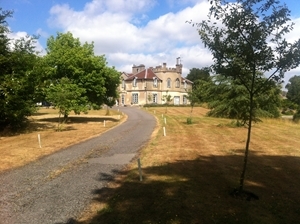 A severe outbreak of the disease Strongylosis in grey partridges in 1931 led Major HG Eley (a cartridge manufacturer employed by ICI) to establish the ICI Game Research Station at Knebworth in Hertfordshire. He gave a research grant to Doug Middleton at the Bureau of Animal Population at Oxford, who established a partridge counting scheme and travelled the country by motorcycle visiting most of the major partridge estates.
A severe outbreak of the disease Strongylosis in grey partridges in 1931 led Major HG Eley (a cartridge manufacturer employed by ICI) to establish the ICI Game Research Station at Knebworth in Hertfordshire. He gave a research grant to Doug Middleton at the Bureau of Animal Population at Oxford, who established a partridge counting scheme and travelled the country by motorcycle visiting most of the major partridge estates.
After the war, Major Eley, with his pre-war assistant Charles Coles, established a new base at Burgate Manor in Fordingbridge, Hampshire, establishing what was later known as the Eley Game Advisory Service. They leased a local 4,000 acre estate and for 14 years ran it as a demonstration and experimental shoot. They began lecture tours, and Nigel Gray headed a team running training courses and advisory visits sponsored by ICI. Terence Blank continued the pre-war partridge counting and bag recording schemes.
Meanwhile, also based at Burgate Manor, Doug Middleton, under the Chairmanship of the then Lord Porchester, established The Game Research Association in 1960. Much of the association's early work was on organo-chlorine pesticides and this work helped to bring in a ban on the use of dieldrin, aldrin and heptachlor seed dressings in 1962.
In 1968, ICI was forced to withdraw most of its financial support for game advice, so in May 1969 the two organisations merged to become the membership based Game Conservancy with Prince Philip as President, author Peter Fleming as Chairman and Charles Coles as Director. In April 1980, it was registered as a research and education charity under the name The Game Conservancy Trust.
In October 2007, The Game Conservancy Trust became the Game & Wildlife Conservation Trust to reflect the depth and breadth of the scientific research it carries out.